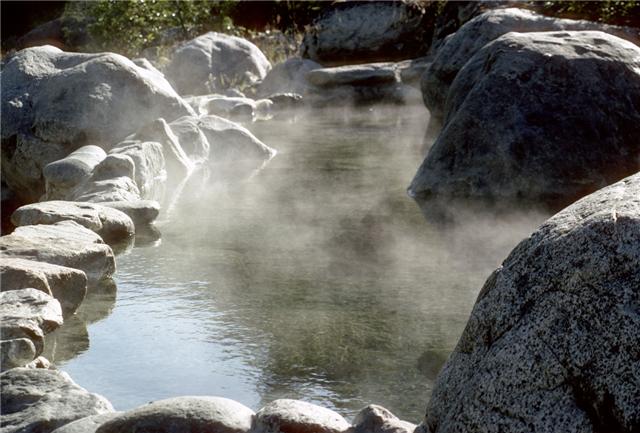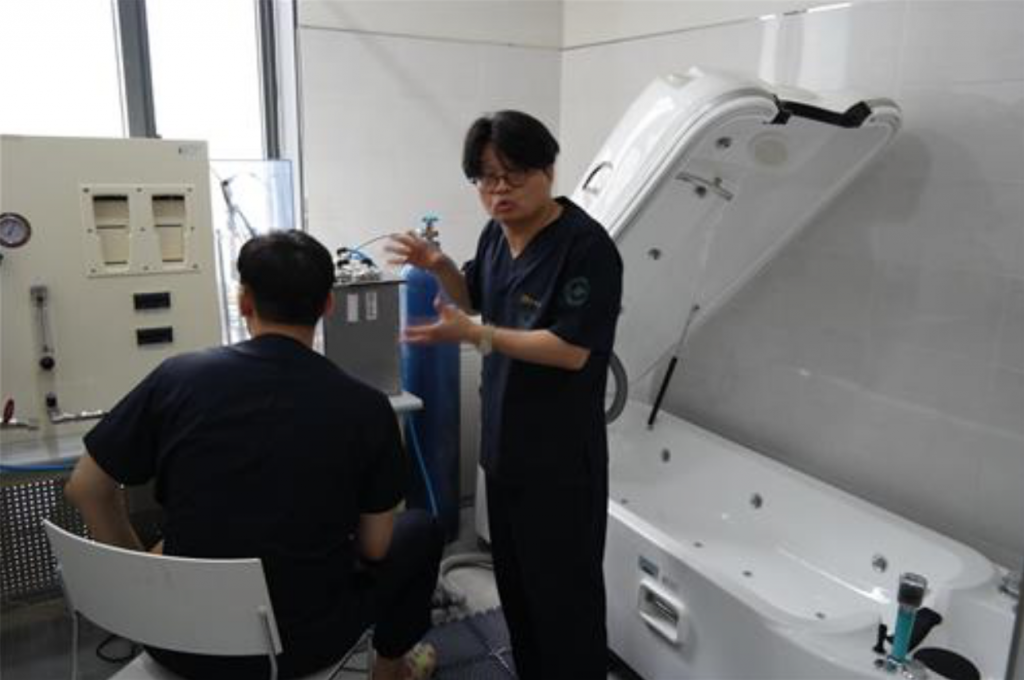
“A hot spring is a must-visit place for patients with painful joint diseases, skin diseases, and paralytic diseases,” said An. (image: Wikipedia)
CHEONAN, June 29 (Korea Bizwire) – Hot springs are high in mineral content from simple calcium to lithium, and even radium. They are widely used for therapeutic purposes in Korea for medical patients and the elderly. But with a new scientific breakthrough, the possibility of receiving hot spring therapy at a hospital or nursing home is becoming increasingly likely.
A team of scientists from Daejeon University led by professor An Taek-won revealed that it has filed a patent for its latest artificial mineral water. The technology uses ordinary tap water to make water with a high mineral content, similar to that of natural hot springs.
The water is named ‘Artificial Mineral Water with Anti-Atopic Excellence’.
To produce the water, the team used the production principles of natural mineral water. It increased the carbonic acid content of tap water, and had it filtered through a self-developed ‘mineral pack’, a special device with rock pillars, which helps to convert it to a mineral-rich, sub-acidic mineral water.
An mentioned that injecting carbon dioxide directly into tap water resulted in various side effects when it was tested on humans, including damaged skin, mainly due to its strong acidity. Drinking it was even worse, resulting in the hypersecretion of gastric acid, leading to gastroesophageal reflux and stomach ulcers.

A team of scientists from Daejeon University led by professor An Taek-won revealed that it has filed a patent for its latest artificial mineral water. The technology uses ordinary tap water to make water with a high mineral content, similar to that of natural hot springs.
(image: Yonhap)
Faced with troubling results, the team focused on improving such drawbacks.
In the new process, tap water is heated to 40 degrees Celsius, and run through a carbon dioxide injection apparatus. The water is then filtered through the ‘mineral pack’, charged with eight different mineral particles – pagodite, calcite, illite, feldspar, talc, dolomite, aragonite, and halite.
The final product, according to the team, has shown to be effective in treating various diseases such as atopic syndrome. In reality, carbonic acid has been medically proven to expand peripheral blood vessels, and carbonic mineral water has been used in the treatment of diabetes and poor blood circulation.
“A hot spring is a must-visit place for patients with painful joint diseases, skin diseases, and paralytic diseases,” said An. “But now with artificial mineral water, hospitals and nursing homes can also provide these alternative remedies, and prescribe various types of mineral water according to a patient’s symptoms and physical constitution.”
By Joseph Shin (jss539@koreabizwire.com)







I would like to have one of these built in America for my business. Do you know how to contact the designer/contractor?
How can I contact professor An Taek-won about his research?
You can check with the information by giving a contact to Korean Medicine Hospital of Daejoen University (http://en.djuca.or.kr/ phone: 82-041-521-7000). You should ask any staff there with the contact info regarding prof. An Taek-won.